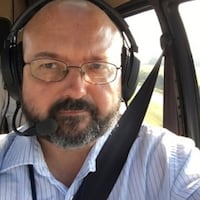Mound Laser & Photonics Center
Services: Microfabrication and other services with lasers.
Employees: 25
Investments: Expects to invest about $800,000 in new equipment this year, including $250,000 each for two cutting systems.
MIAMISBURG — Larry Dosser, president of Mound Laser & Photonics Center Inc., is as focused as one of the lasers his employees use to cut, shape and weld.
That focus has paid off. While the company — found on top of the hill at the Mound Advanced Technology Center — saw revenue stay flat in 2008-09, it expects to double revenue this year. And company leaders see a time when the firm will have 75 employees compared with 25 today.
That’s news at once good — and unsettling.
“We’re going to need a new facility, a facility designed for the specific work we do,” said Dosser, 66, who has worked at the Mound campus since October 1980, when it was a nuclear defense production site.
Today, the company has operations spread over three floors and 10,000 square feet. Dosser said he wants to stay in Dayton, but the company has heard inquiries from Florida.
“When other states approach us, it has to be considered, whether it will happen or not,” said Kevin Hartke, Mound’s vice president of operations.
Dosser said he is communicating with Miamisburg and Ohio government, as well as the Dayton Development Coalition, about his company’s needs. A location decision may be a year or two away, he said.
Mound’s 140 customers are spread across 19 states, but its top five commercial customers are in California, mostly the Silicon Valley, Dosser and Hartke noted. There is also a “photonics corridor” in Florida, and the company already has a relationship with the University of Central Florida.
Still, Mound’s No. 1 government customer is the Air Force Research Laboratory, based at Wright-Patterson Air Force Base. Of the company’s $1 million in government-related revenue, most is tied to the base.
Mound has prospered thanks to its focus on what Dosser calls two “recession-proof” markets: medical devices and defense. In particular, the “miniaturization” of medical devices demands what lasers do so well — work with very small objects.
Mound gets objects 200 microns thick (a strand of your hair is 100 microns) and “we’re drilling a hole through the middle of it,” Dosser said.
About the Author
